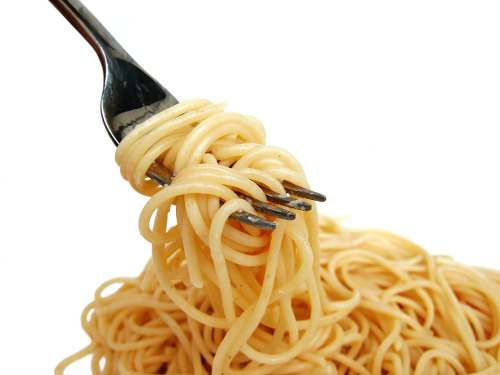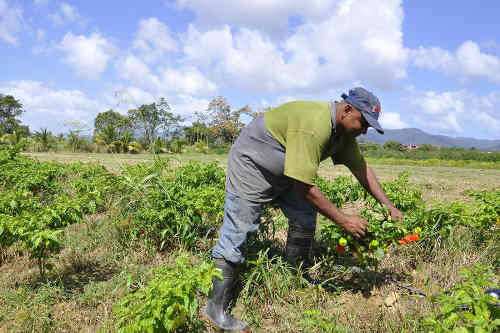Recently, there has been much noise over Trinidad and Tobago’s capacity to produce the foods that we eat. I use the word “noise” instead of discussion or debate because so much of what is said and written is uninformed.

(Courtesy Chexfoods)
With the economy in full-blown recession and foreign exchange inadequate to meet our many import needs or tastes, the possibility of food shortages is real, since we import close to 90 percent of what we consume at an annual cost of between TT$4 billion and TT$5 billion.
Some of us have long warned that because we have, to our peril, abandoned food production in favour of industrialisation, we might one day find ourselves flush with cash but short of food—since we can’t eat dollar bills. But we must now change that 50-year old tune.
Today, we are low on cash and we may also end up with inadequate food in the markets and supermarkets, which could spawn a thriving black market.
I make these pronouncements with no relish, but rather with a heavy heart.
You see, for decades, visionaries and patriots like Professors George Sammy, John Spence and Julian Kenny, all deceased, preached the gospel of food security. But the politicians and people ignored them, except for some feeble but futile forays into projects that were doomed to fail.
Over the years, we covered most of our premium soil-types along the East-West Corridor—from Chaguaramas to Sangre Grande and even Toco—with concrete and asphalt.

(Courtesy News.Co.TT)
And much later when the sugar industry was abandoned—too late if anything, I will debate anyone on this assertion—governments, land-raiders and squatters ensured that the 70,000 acres of land which Caroni Ltd occupied was also abandoned or misappropriated.
So to come now, in the midst of a looming food crisis, and talk about fast-tracking food security is to talk ‘tata’.
It is not the first time I am raising these realities to show how unequipped we are to come anywhere close to being food-secure. But, faced with “harden” people, I repeat myself.
What do we eat? What are the staples we consume? Can we substitute local produce for our biggest, costliest imports?
Here are some of the main foods we import, based on the 2011 data from the Food and Agriculture Organisation (FAO), which will have hardly changed in volume, although prices/costs may have increased.
Wheat tops the list with 118,000 tonnes costing US $48.6 million. We cannot grow wheat and we are addicted to its many edible products like bread, roti, doubles, macaroni, pasta, etc.

(Courtesy Science-All)
Who will dare tell Trinis that they can get better, more complex carbohydrates from our tubers and ground provisions like cassava, yams, dasheen, sweet potatoes, etc and crops like breadfruit and chataigne?
In sub-Saharan Africa where, until a few decades ago, these said indigenous produce were staples, wheat flour was introduced—imported, of course. And now the natives cannot do without bread and pasta, whatever the cost and however harmful to their health.
Note, too, that our overall production of these carbohydrate-alternatives amounted to approximately 10,000 tonnes per annum, according to the Ministry of Food Production’s figures in 2012.
So strike one in favour of an import that we cannot get rid of—however adept our women-folk may become at peeling cassava, as the Prime Minister exhorted them to.
We consume approximately 35,000 tonnes of rice. We currently produce around 3,000 tonnes, and at best we can increase that to 10,000 tonnes. And that’s overly optimistic.

(Courtesy Caribbean Pot)
The second costliest import according to the FAO is what they classify as “Food Prep Nes”, which I interpret to include composite food preparations. And do you know that the breads you buy at fast foods franchises are imported as refrigerated dough and only baked here?
In 2011, we spent US$47 million on these foods.
Other major imports include cheese (US$43 million), refined sugar (US$29 million—if we had produced it, it would have cost at least twice that sum), maize (US$24 million), chicken meat (US$24 million), soybean oil (US$21 million), other “food preps” (US$20 million), infant food (US$19 million), pastry (US$17 million), whole dried milk (US$15 million), soybean cake (US$15 million), hen eggs in shell (US$15 million), beef (US$15 million), frozen potatoes (chips—US$12 million), and so on.
The FAO includes in food imports alcoholic beverages (US$32 million) and non-alcoholic beverages (US$21 million).
The top 20 food imports in 2011 cost us approximately US$300 million, or close to TT$2 billion.

Bear in mind this list does not include a wide range of beans and pulses, meats other than beef (pork, mutton), fish (in 2011, we consumed 112 tonnes of tilapia but produced only 11 tonnes), foreign fruits, etc.
Now, try to figure out what among these imports we can produce locally, other than vegetables.
If you come up with any bright ideas, email me before next Tuesday when I continue to examine our food insecurity.
Editor’s Note: Click HERE to read Part Two titled: Descent into imports-dependence: How colonialism affects our diet, even today.
Raffique Shah is a columnist for over three decades, founder of the T&T International Marathon, co-founder of the ULF with Basdeo Panday and George Weekes, a former sugar cane farmers union leader and an ex-Siparia MP.
He trained at the UK’s Royal Military Academy Sandhurst and was arrested, court-martialled, sentenced and eventually freed on appeal after leading 300 troops in a mutiny at Teteron Barracks during the Black Power revolution of 1970.
 Wired868 Wired868 for smart sport news and opinion
Wired868 Wired868 for smart sport news and opinion






